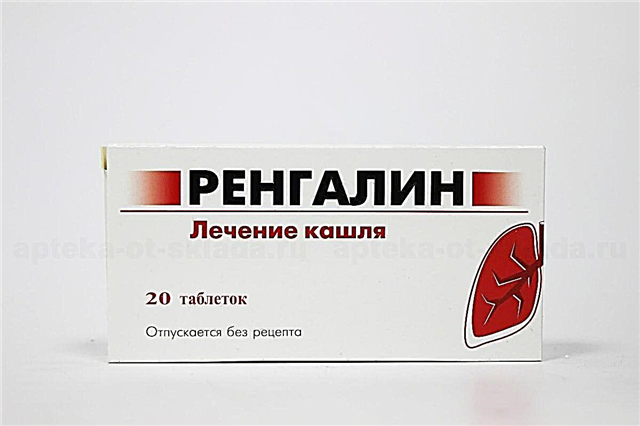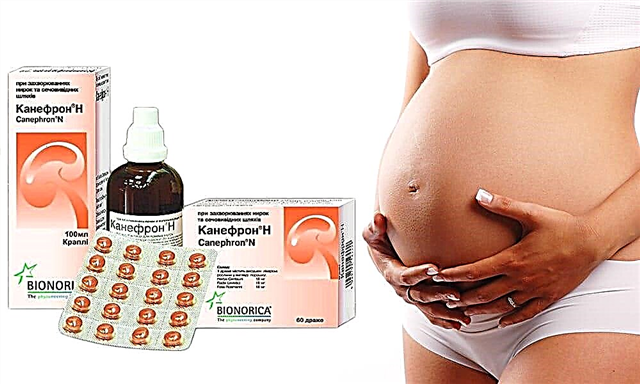What do you think, when a symptom appears, parents usually start to seriously worry about the health of their baby? I think there will be many answers and they are very different. But I can say with confidence: the most popular of them is fever. Yes, in most cases it is. A rise in temperature is one of the earliest signs for many diseases and almost all infections. But what if this symptom is absent? The child begins to vomit, then diarrhea (diarrhea) may still join, and the temperature is normal. Diarrhea and vomiting in a child without fever? So what are these diseases? In this article, you will learn about the most common diseases, the main symptoms of which are vomiting and diarrhea in the absence of fever.
Of course, if all this happens to the baby, the parents immediately go to the doctor. After all, it is scary and incomprehensible. And if it's a schoolboy or teenager? Vomited several times a day, and may not admit to changes in stool at all. This can get past the parents' attention.
But in this case, as in the previous one, one must remain attentive and vigilant. After all, diarrhea and vomiting without fever are only symptoms that are characteristic of certain diseases. And in order to cope with them, you need to know what exactly we are dealing with.
Intestinal infection
Having heard about an intestinal infection, I think you will object to me and say: "But what about without a rise in temperature ?!", and you will be almost right. But still, there are times when it is not. Only vomiting with or without diarrhea.
It mainly occurs in children with immune system diseases. There are not many of them, but in childhood, intestinal infections are a very frequent guest. So let's not forget about them.
When you are sick, do not forget about diet. Eliminate raw vegetables and fruits, dairy products, fried and fatty foods. Meals are fractional and frequent. Solder your child. If you vomit, do not give a lot at a time. Better take a sip every five minutes.
Food poisoning
It can be obtained as a result of eating poor quality food. The more a child has eaten, the worse his health is. The stomach, trying to protect the body, tries to get rid of all this. And what has managed to get further triggers the acceleration mechanism of peristalsis, which is manifested by diarrhea.
The duration of the disease depends on the amount of food, the child's body and the adequacy of the treatment. The main thing in the treatment is sorbents (activated carbon, Smecta, etc.), drinking plenty of fluids and restricting food.
If the child is poisoned with drugs, signs of an overdose of this drug are added to the above symptoms. In this case, immediate hospitalization is indicated.

Inflammatory processes in the organs of the gastrointestinal tract
The most famous - and you all know him - is gastritis. Now almost every schoolchild suffers from it. But besides it, there are stomach ulcer or duodenal ulcer, duodenitis (inflammation of the duodenal mucosa), pancreatitis (inflammation of the pancreas), cholecystitis (inflammation of the gallbladder).
They are manifested not only by vomiting and diarrhea, but also by abdominal pain. Moreover, at the beginning of the disease, it brings more suffering and depends on the location of the affected organ and the severity of the disease.
If the mother or father has the above diseases, the child is automatically at risk (the so-called hereditary predisposition).
Treatment is prescribed after examination and diagnosis. Diet is key. The food is fractional, gentle, with the exception of dishes that irritate the mucous membrane (fried, smoked, salty, overly seasoned).
Overeating, indigestion, feeding disorders
They are mainly characterized by single or double vomiting of food eaten the day before. The reason is that the food was inadequate either in volume (excessive) or in composition (for example, too fatty).
At the same time, general well-being suffers more in children under one year old.

Be sure to follow the rules for introducing complementary foods. It should be started no earlier than six months of age. The first product is porridge or vegetable puree. The initial volume is half a teaspoon. Give in the morning against the background of the baby's full health. Gradually increase the volume, take your time with a variety of products. Watch for reactions to new foods.
Metabolic disorders
Mostly hereditary. They consist in the fact that certain enzymes or hormones are not produced in the body, due to which not only the digestion process itself suffers, but also other organs that are poisoned by the products of altered metabolism. This group of diseases includes celiac disease, cystic fibrosis, maple syrup disease and others.
These diseases manifest themselves in infancy. The possibility of a favorable outcome is high only in the case of early diagnosis and treatment.
Food allergy
The reason for it lies in the intolerance of certain foods, which is caused by immunological reactions in the body. The most common products are cow's milk, nuts, fish, eggs, crustaceans.
 We are used to the fact that this disease manifests itself mainly on the skin in the form of a typical allergic rash, but the gastrointestinal tract suffers even more, because it is also one of the immune organs.
We are used to the fact that this disease manifests itself mainly on the skin in the form of a typical allergic rash, but the gastrointestinal tract suffers even more, because it is also one of the immune organs.
The disease begins to show itself even before a year. The child is worried about vomiting and diarrhea, abdominal pain, childhood eczema, atopic dermatitis, often allergic rhinitis.
In older children, the disease becomes chronic, adenoiditis and chronic tonsillitis can form.
Treatment consists in the strictest diet, taking antihistamines.
Intestinal parasitosis
This is a large group of diseases that are caused by helminths and protozoa. The most common are ascariasis, enterobiasis, trichocephalosis, giardiasis. Diagnosed by examining feces.
Parents may be alerted by a child's poor appetite, disturbed sleep, abdominal pain, nausea and vomiting, diarrhea, itching in the perianal region.
For the prevention of helminthiasis, a single dose of an antiparasitic agent is recommended twice a year.
Pylorospasm and pyloric stenosis
These conditions are characteristic exclusively for very young children.
 Pylorospasm is a muscle contraction of the zone of transition of the stomach into the duodenum.
Pylorospasm is a muscle contraction of the zone of transition of the stomach into the duodenum.
It is manifested by vomiting or profuse regurgitation after eating. Basically, premature or excitable babies suffer from this. The use of antireflux mixture helps to cope with this problem.
The doctor can also prescribe antispasmodics and baths with chamomile or valerian. By about four months, the tone of the pylorus is normalized.
But there are cases when the cause of vomiting is not a spasm, but a stenosis (narrowing) of this department. It cannot be cured with a mixture or baths and will not go away with time.
Everything is much more serious here. Profuse vomiting, fountain. The chair is hungry. The kid is rapidly losing weight. In the presence of such symptoms, an X-ray examination is performed to confirm the diagnosis. Treatment is only surgical.
Diseases of the central nervous system
It's no secret that the center of vomiting is located in the brain. Therefore, when it is affected, vomiting is a common symptom. In newborns, this may be due to birth trauma, asphyxia, or hydrocephalus. In older children - with tumors, meningitis, epilepsy.
But most importantly, vomiting is one of the first symptoms of traumatic brain injury.
It is the suspicion of a concussion that takes the first place in terms of seeking medical help from pediatric traumatologists.
Intestinal obstruction
Or rather, its variety is intestinal intussusception. Occurs in newborns, children under one year and older. Most often occurs during the introduction of complementary foods.
 In case of a gross violation of the rules for its administration, when an unusually large amount of food is given, the intestines have to increase peristalsis.
In case of a gross violation of the rules for its administration, when an unusually large amount of food is given, the intestines have to increase peristalsis.
Often, due to impaired motility, one section of the intestine is introduced into the lumen of another (invaginates). Then there is an intestinal obstruction. The child is pale, groans and screams from cramping pains in the abdomen.
Vomiting profuse, with stagnant odor. Stool streaked with raspberry jelly blood.
With such symptoms, urgent hospitalization is indicated. Treatment is mainly surgical.
Acute appendicitis
The sick child is usually of preschool or school age. It starts with pain in the navel, diarrhea and increased urination. Further, the pain intensifies, migrates lower and to the right.
Vomiting joins, some children have fever. To clarify the diagnosis, consultation of a surgeon and pediatrician is required.
Dysbacteriosis
This is not an independent disease, but a clinical laboratory syndrome. The reason is poor nutrition, diseases of the gastrointestinal tract, prolonged antibiotic therapy, weakening of the immune system against the background of prolonged illness.
At the same time, the balance of the intestinal microflora is disturbed, which leads to a distortion of the processes of digestion and absorption of substances, and the depletion of the body.
Treatment consists in the normalization of the flora with special preparations (eubiotics, prebiotics, probiotics). In each case, the choice of the drug rests with the doctor.
Psychogenic vomiting and bear disease
Here the reason is purely functional and it is in the head. This kind of disorder occurs in children from preschool age as a reaction to excessive excitement and fear. The body expresses its protest and rejection.
It is often enough to establish contact between the parent and the child. In advanced situations, the consultation of a psychotherapist is required.
Of course, these are only the most common diseases, disorders and conditions. The world of symptoms is diverse. And each of them is important in the overall picture of the disease. Therefore, if symptoms disturbing you appear, do not postpone the diagnosis until later, consult a doctor.
Be healthy!



